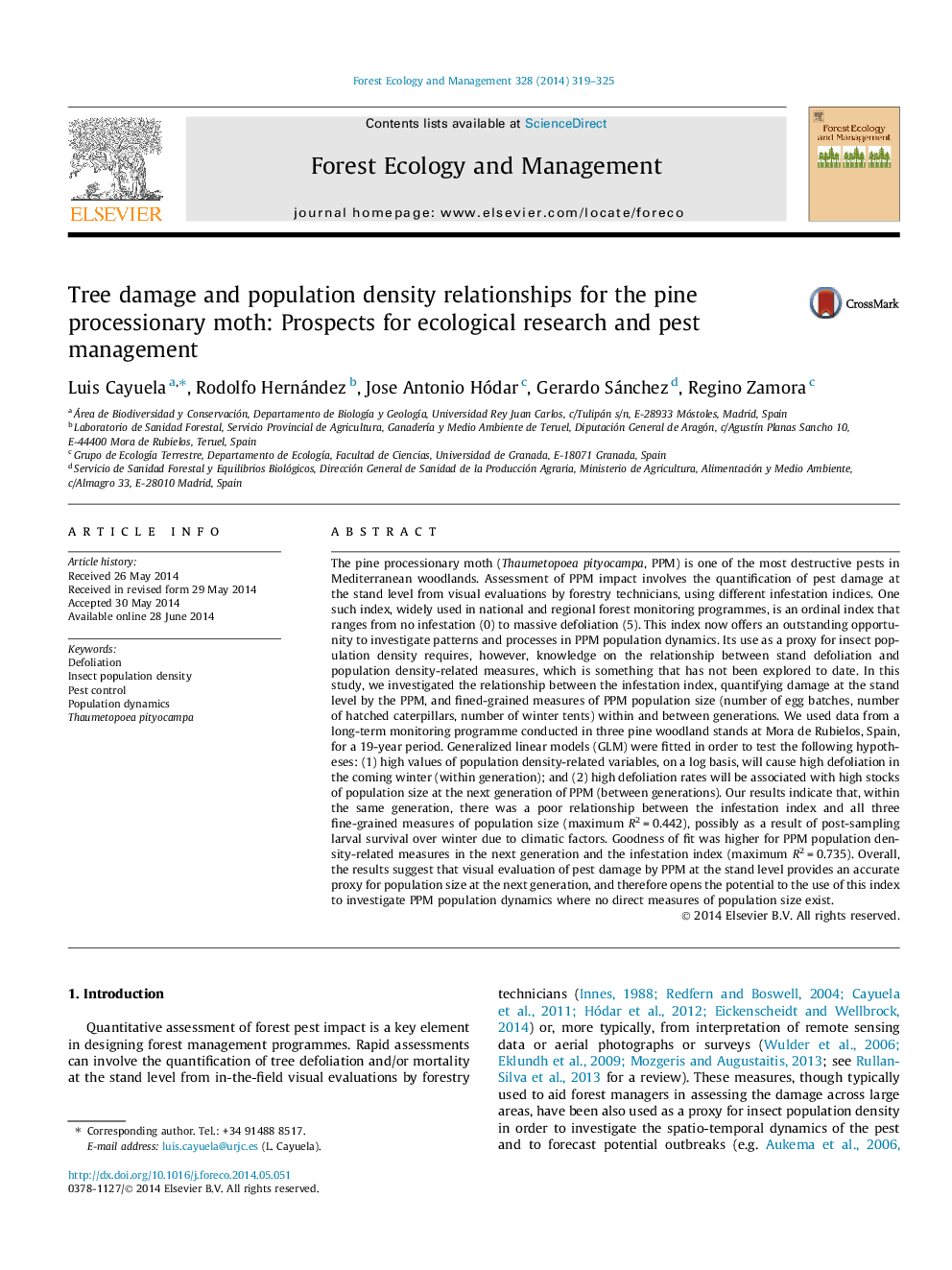| کد مقاله | کد نشریه | سال انتشار | مقاله انگلیسی | نسخه تمام متن |
|---|---|---|---|---|
| 86531 | 159194 | 2014 | 7 صفحه PDF | دانلود رایگان |
• Tree damage caused by insect pests is typically evaluated at the stand level.
• A semiquantitative 0–5 index is used for the pine processionary moth (PPM).
• This index is poorly related to fine-grained PPM population density measures.
• However, it can predict fairly accurate population density at the next generation.
• This opens the potential to the use of this index to investigate PPM population dynamics.
The pine processionary moth (Thaumetopoea pityocampa, PPM) is one of the most destructive pests in Mediterranean woodlands. Assessment of PPM impact involves the quantification of pest damage at the stand level from visual evaluations by forestry technicians, using different infestation indices. One such index, widely used in national and regional forest monitoring programmes, is an ordinal index that ranges from no infestation (0) to massive defoliation (5). This index now offers an outstanding opportunity to investigate patterns and processes in PPM population dynamics. Its use as a proxy for insect population density requires, however, knowledge on the relationship between stand defoliation and population density-related measures, which is something that has not been explored to date. In this study, we investigated the relationship between the infestation index, quantifying damage at the stand level by the PPM, and fined-grained measures of PPM population size (number of egg batches, number of hatched caterpillars, number of winter tents) within and between generations. We used data from a long-term monitoring programme conducted in three pine woodland stands at Mora de Rubielos, Spain, for a 19-year period. Generalized linear models (GLM) were fitted in order to test the following hypotheses: (1) high values of population density-related variables, on a log basis, will cause high defoliation in the coming winter (within generation); and (2) high defoliation rates will be associated with high stocks of population size at the next generation of PPM (between generations). Our results indicate that, within the same generation, there was a poor relationship between the infestation index and all three fine-grained measures of population size (maximum R2 = 0.442), possibly as a result of post-sampling larval survival over winter due to climatic factors. Goodness of fit was higher for PPM population density-related measures in the next generation and the infestation index (maximum R2 = 0.735). Overall, the results suggest that visual evaluation of pest damage by PPM at the stand level provides an accurate proxy for population size at the next generation, and therefore opens the potential to the use of this index to investigate PPM population dynamics where no direct measures of population size exist.
Journal: Forest Ecology and Management - Volume 328, 15 September 2014, Pages 319–325
